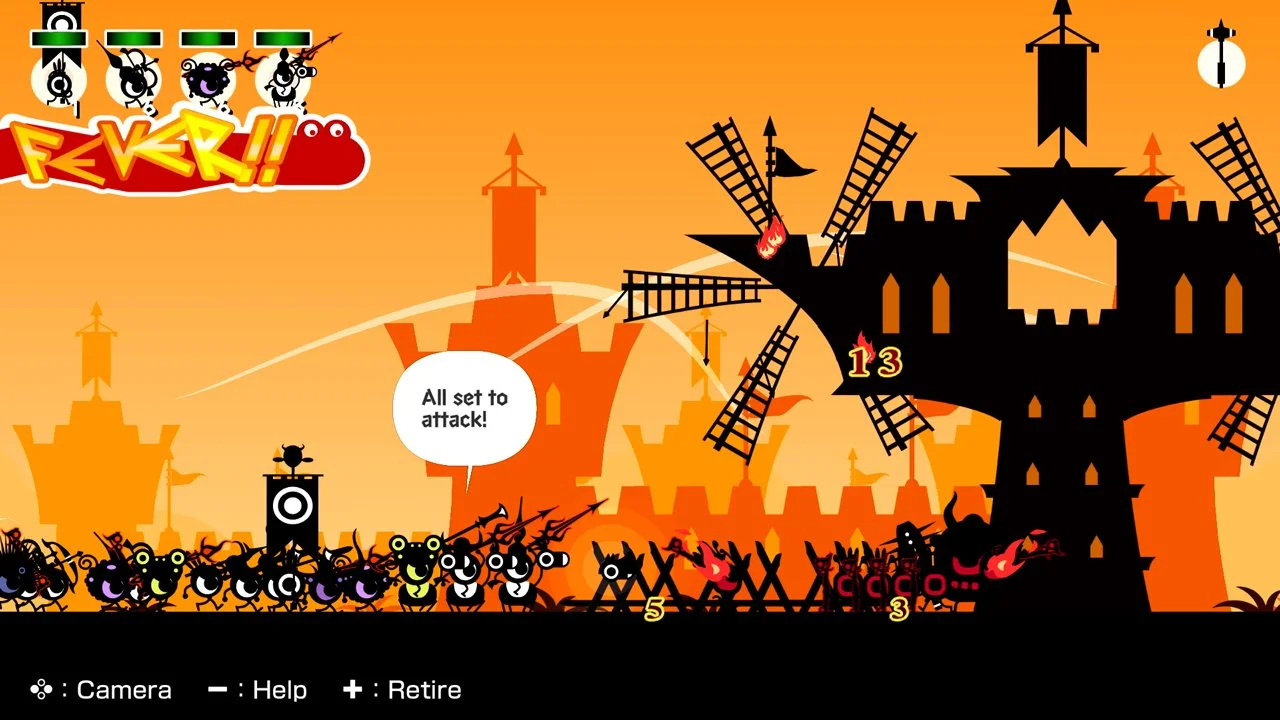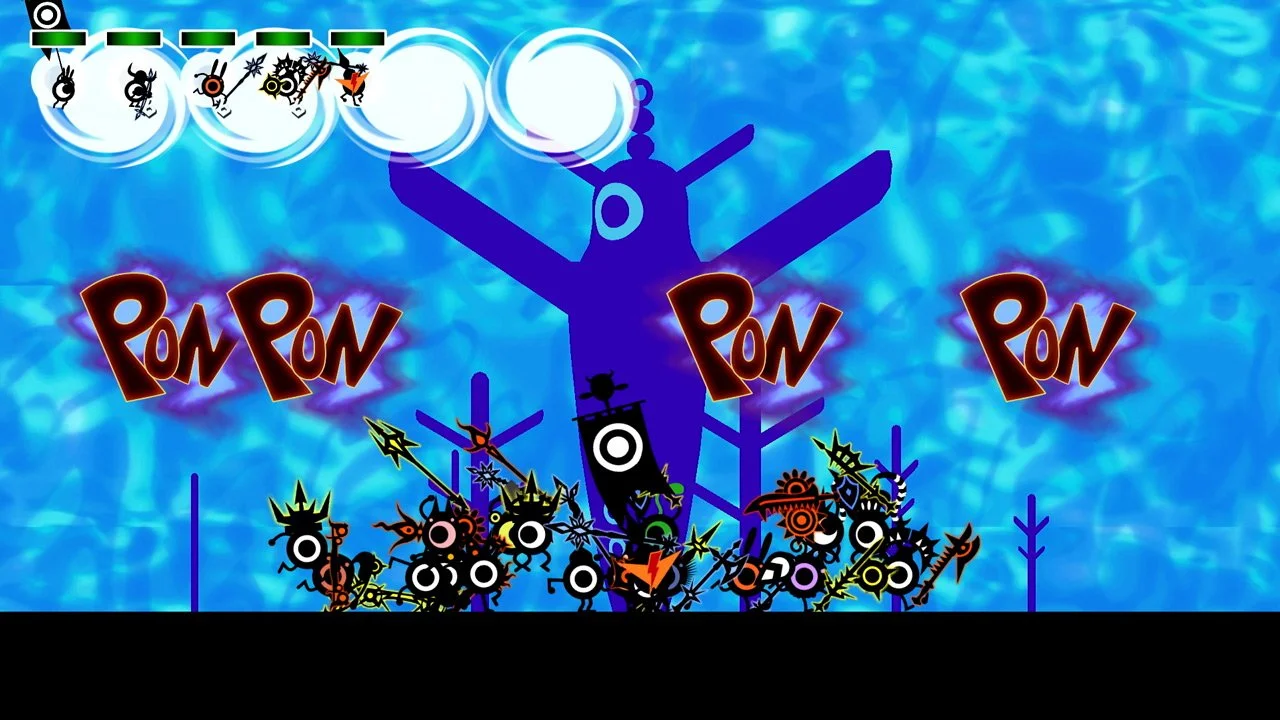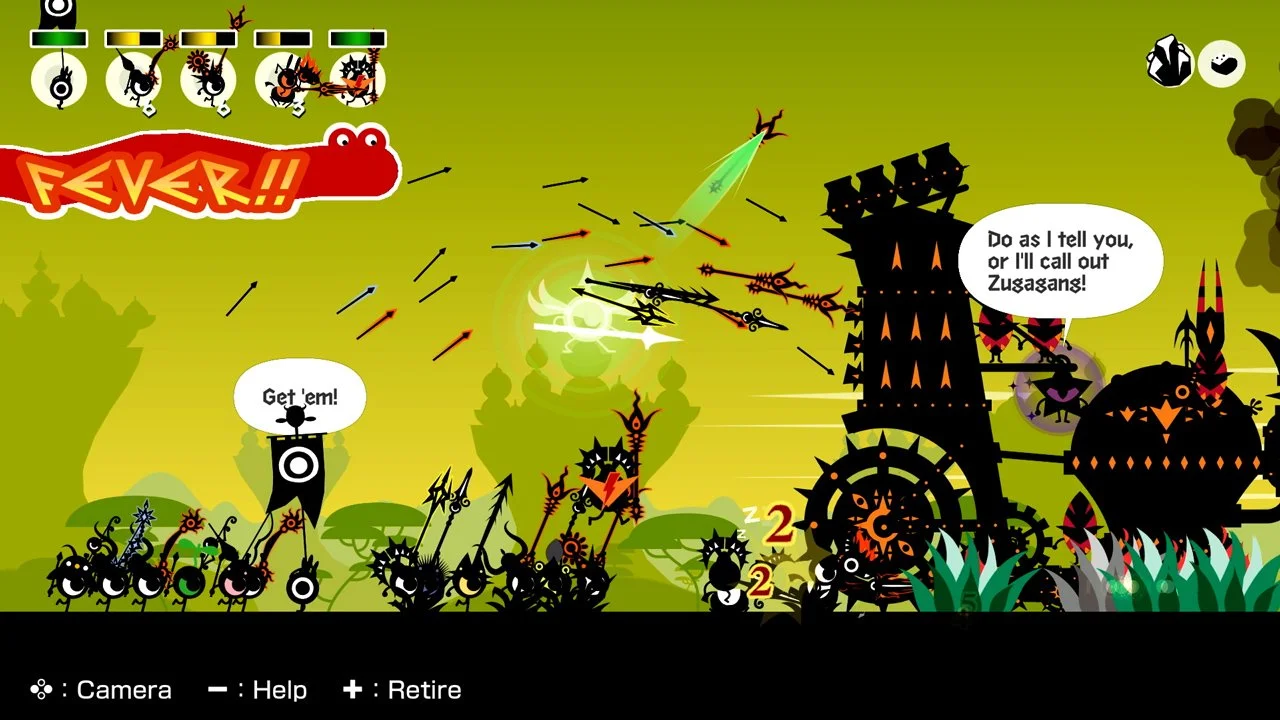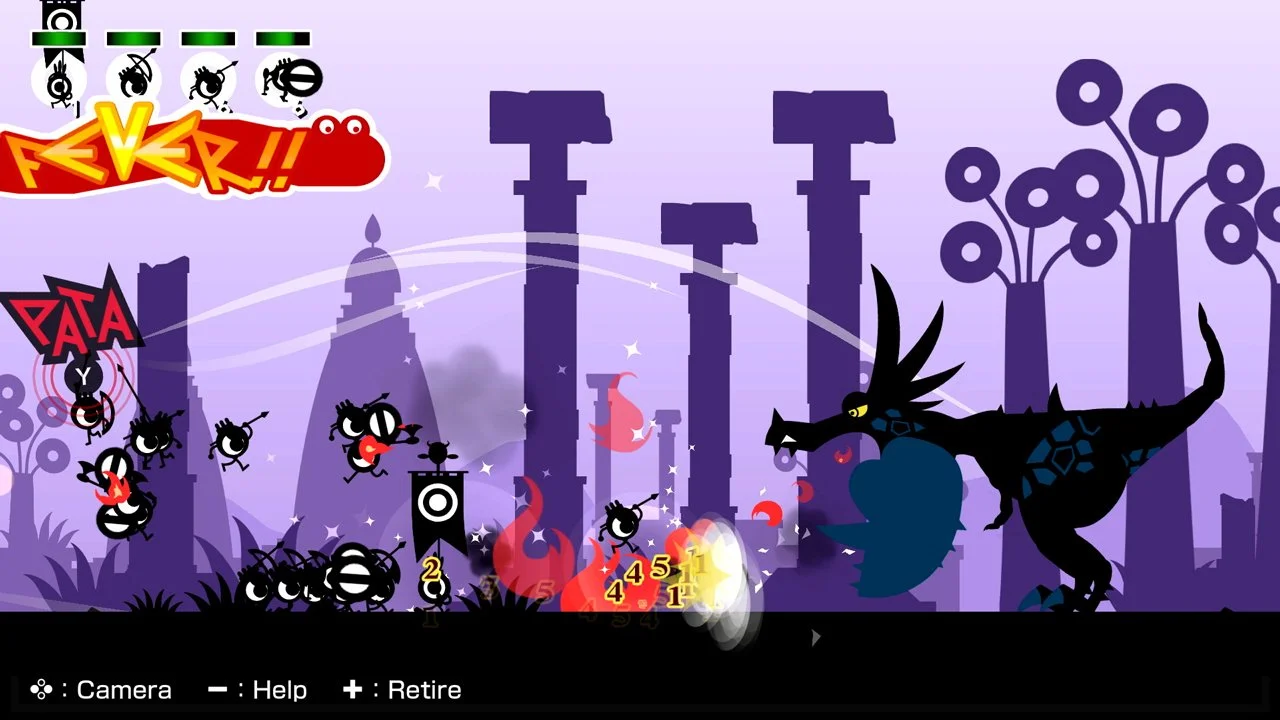Patapon 1+2 Replay - Review

The PlayStation Portable delivered some pretty unique games and some great portable entries from games known for their console appearances. Patapon falls into the first group, because at first glance it was a cute looking platform, but a little play revealed the rhythmic war simulator. Ok, so it is not so much a war simulator, but you will beat a lot in the series. It has been years since we last got either game and now Bandai Namco have brought them to modern platforms, is this a port that truly can’t be beat?
For those curious, there is no new content in the game, there are some new features, but it delivers content parity. The two games are not running side by side, as it were, rather you access them from a main menu and then the game loads in the one selected. That is how almost all collections behave and it is fine. What is a nice addition to the collection is that the options are set in that menu, so instead of setting them in one game and then having to change them in the other, its one and done. This is just one of those user-friendly approaches and I am happy to see it. The options here are the new additions and they don’t change the gameplay, but they do make it more approachable. The two options you will likely care about are the timing adjustments and the difficulty settings. The former is important as all TV’s can display video at different rates, so syncing your audio up is important and while it was not an issue on the PSP itself, it is great to see them realise the potential issue and address it early.
The gameplay here is fairly straightforward, you need to create a beat in order to drive your Patapon forward. As you being the game you will only have a few patterns to unlock, but slowly you will discover more, which is where the command list option they added comes in handy. Each face button on the controller responds to a set tone, on Switch A is Pon, so pressing that four times creates the rhythm Pon Pon Pon Pon, well creates it but it won’t work. If you press the buttons down and create a rhythm the game does not understand, your Patapon will stall and you will lose the beat. Thankfully you do not need to keep to the timing, because it starts over when you do, so if you do mess up, you can just jump right back in. Once you have successfully entered a command, the Patapon repeat it back to you and then you enter another one and together you create music, keep it up and you get a fever going.
Both games are not just about smashing buttons together to progress, but between the missions you need to think about your Patapon and the upgrades you can provide them. Some upgrades are just as simple as replacing a basic weapon with one made from steel, but some others have you upgrading the actual Patapon, which unlock extra abilities when you enter a fever mode. There were a number of battles that I found challenging the first time through, simply because I had not upgraded my Patapon, but upon doing that, I was able to progress fine. What is great is that across the two titles, there are some 400 different weapons and equipment, ensuring that you can find options that work for your type of play. This means if you want the first line of Patapon to be all about defence, you can have that, if you want them to be all about attacking you can have that too. Combining the different equipment with the different Patapon, allows for quite a lot of variety, which makes replaying stages a lot of fun.
Speaking of the stages, that is a good time to talk about the presentation, because there is some good and some just ok. The good is that the updated visuals all look fantastic, now I played this on Nintendo Switch 2 and in handheld mode and docked, the game run great, but more importantly the levels stood out. The original release on the PSP needed a way to make sure players could clearly see the action on the smaller display, something you can replicate playing it on Switch. But with the game on Switch and PlayStation consoles, that means 4K TV’s are now supported, which means a lot more display. At first I was concerned that the extra space would just mean things would get blown out, but those visuals do scale nicely. Each time I unlocked a new drum, in both games, I did chuckle at seeing the PlayStation icons on a Nintendo platform, but that was just fun.
Where the just ok comes in, is purely down to how muddled things can still be at times, when the action kicks into gear. Just trying to keep track of your Patapon as they run forward to attack, which some run back to defend, it gets a bit much. It becomes even worse if you start trying to track which ones took the damage from an enemy, because when you have four or five bunched up and you see a lot of numbers, knowing who got hit the worst is near impossible.
The sound is perhaps where the games have always shone, simply because without the music the gameplay does not exist. Thankfully the wonderful percussive melodies all exist here, which all sound fantastic on TV speakers. Getting the patterns out correctly does mean you get to hear the delightful cries of the Patapon as they repeat it back to you, but it also means you get to hear them sigh when you mess up. Each stage has an underlying melody you can enjoy and getting the beats in the mix changes it up enough, so that it feels fresh no matter how often you replay the stage.
Patapon 1+2 Replay is a great release, it brings two fun titles to modern platforms, but apart from a few small quality of life features, doesn’t make any changes to what made them great in the first place. The updated art looks stunning, especially on a Nintendo Switch 2 display and while there are times when things get mixed, it still shows off how amazing the original design was. If you are a rhythm game fan, then picking up this release is a no brainer and if you are not, then you need to see what all the fun is about.
The Score
8.0
Review code provided by Bandai Namco
The Pros
Both games are still as fun to play today as they were when they first released
The new additions make the games more accessible than ever before
The Cons
The visuals, while fantastic, do leave a bit of chaos on the screen at times
Finding the right beat can be a challenge and the game does not really have any solutions in place for those without rhythm









